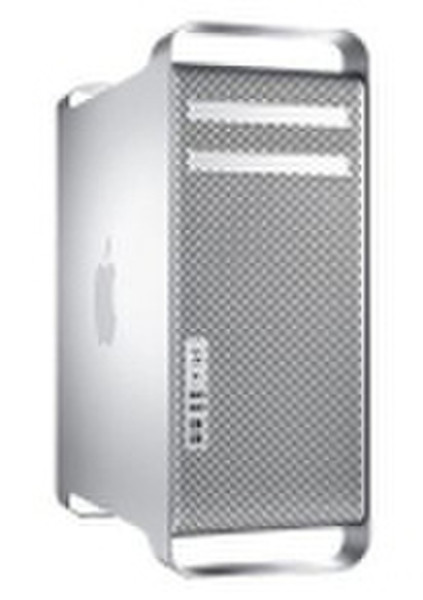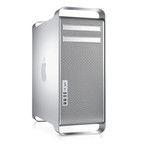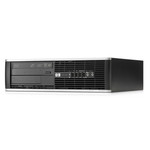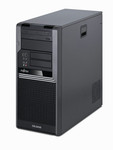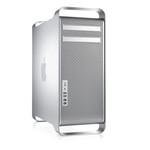Catalog
-
Catalog
- Antiquitäten & Kunst
- Auto & Motorrad: Fahrzeuge
- Baby
- Business & Industry
- Bücher
- Camping & Outdoor
- Feinschmecker
- Garden & patio
- Haustierbedarf
- Heimwerken & Garten
- HiFi & Audio
- Home, Construction, Renovation
- Household appliances
- Kleidung & Accessoires
- Modellbau
- Musik
- PC- & Videospiele
- Photo & camcorders
- Sammeln & Seltenes
- Spielzeug
- TV, Video, DVD
- Telekommunikation
- Uhren & Schmuck
- Wellness & Beauty
- computers & electronics
- entertainment & hobby
- fashion & lifestyle
- food, beverages & tobacco
- health & beauty
- institutional food services equipment
- medical equipment, accessories & supplies
- office
- sports & recreation
- vehicles & accessories
- weapons & ammunition
Filters
Search
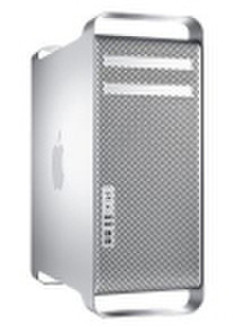
Apple Mac Pro 2.8GHz W3530 Tower Silver PC
MPN: MC560F/A
🚚 Select the country of delivery:
Delivery from:
Germany
Sale and delivery by:
Where to buy and prices (Advertising *)
On Top
Technical specifications
On Top
Processor special features
| Intel Rapid Storage Technology | N |
|---|---|
| Embedded options available | N |
| Intel® Smart Cache | Y |
| Intel vPro Technology | N |
| Intel Fast Memory Access | N |
| Intel Flex Memory Access | N |
| Execute Disable Bit | Y |
| Idle States | Y |
| Thermal Monitoring Technologies | N |
| Intel Trusted Execution Technology | N |
| Physical Address Extension (PAE) | 36 bit |
| Intel Virtualization Technology (VT-x) | Y |
| Processor package size | 42.5 mm |
| Processor ARK ID | 41313 |
| Processor code | SLBKR |
| Intel® Quick Sync Video Technology | N |
| Intel® Insider™ | N |
| Intel 64 | Y |
| Intel Clear Video Technology | N |
| Intel Dual Display Capable Technology | N |
| CPU configuration (max) | 1 |
| Intel Virtualization Technology for Directed I/O (VT-d) | N |
| Intel® Anti-Theft Technology (Intel® AT) | N |
| Intel Hyper-Threading Technology | Y |
| Intel® Turbo Boost Technology | Y |
| Intel Enhanced Halt State | Y |
| Intel® My WiFi Technology (Intel® MWT) | N |
| Intel Clear Video Technology for MID | N |
| Intel VT-x with Extended Page Tables (EPT) | Y |
| Intel FDI Technology | N |
| Enhanced Intel SpeedStep Technology | Y |
| Intel Demand Based Switching | Y |
| Intel® Wireless Display (Intel® WiDi) | N |
| Intel® Clear Video HD Technology (Intel® CVT HD) | N |
| Supported instruction sets | SSE4.2 |
Processor
| Number of QPI links | 1 |
|---|---|
| Thermal Design Power (TDP) | 130 W |
| Stepping | D0 |
| Number of processors installed | 1 |
| Processor core voltage (AC) | 1.55 V |
| Processor boost frequency | 3.06 GHz |
| Processor cache | 8 MB |
| Processor lithography | 45 nm |
| Processor codename | Bloomfield |
| Memory clock speeds supported by processor | 800, 1066 MHz |
| Memory bandwidth supported by processor (max) | 25.6 GB/s |
| Processor cache type | Smart Cache |
| Memory channels supported by processor | Triple |
| Conflict Free processor | N |
| FSB Parity | N |
| Number of Processing Die Transistors | 731 M |
| CPU multiplier (bus/core ratio) | 21 |
| Processor operating modes | 64-bit |
| Processor cores | 4 |
| Processor frequency | 2.8 GHz |
| Tcase | 67.9 °C |
| ECC supported by processor | Y |
| Memory types supported by processor | DDR3-SDRAM |
| Maximum internal memory supported by processor | 24 GB |
| Bus type | QPI |
Packaging content
| Keyboard supplied | Y |
|---|---|
| Display included | N |
| Handheld remote control | N |
| Mouse included | Y |
Ports & interfaces
| Headphone outputs | 1 |
|---|---|
| DVI port | N |
| SmartCard slot | N |
| Line-in | Y |
| Line-out | Y |
| Firewire (IEEE 1394) ports | 4 |
| S/PDIF out port | Y |
| Microphone in | N |
| DC-in jack | N |
Networking
| Bluetooth | Y |
|---|---|
| Ethernet LAN data rates | 10, 100, 1000 Mbit/s |
| Bluetooth version | 2.1+EDR |
| Wi-Fi | Y |
Operational conditions
| Operating altitude | 0 - 3300 m |
|---|
Other features
| BIOS password | Y |
|---|---|
| Internal drive bays | 4 x 3.5" |
| CD read speed | 32 x |
| Floppy drive installed | N |
| Graphics adapter family | AMD |
| CD write speed | 32 x |
| CD rewrite speed | 32 x |
| Mac compatibility | Y |
| Audio system full duplex | Y |
| Wireless technology | Wi-Fi |
| TV tuner integrated | N |
| Built-in camera | N |
| Compliance industry standards | IEEE 802.3, IEEE 802.3u, IEEE 802.3ab |
| Networking features | Gigabit Ethernet |
| Built-in microphone | N |
| Operating temperature (T-T) | 50 - 95 °F |
Expansion slots
| PCI Express x4 slots | 2 |
|---|---|
| PCI Express x16 slots | 1 |
Memory
| Memory clock speed | 1066 MHz |
|---|---|
| Memory layout (slots x size) | 3 x 1 GB |
| Maximum internal memory | 16 GB |
| Internal memory | 3 GB |
| Internal memory type | DDR3-SDRAM |
Graphics
| Discrete graphics memory type | GDDR5 |
|---|---|
| Discrete graphics adapter model | AMD Radeon HD 5770 |
| Discrete graphics adapter memory | 1024 GB |
Storage
| Hard drive speed | 7200 RPM |
|---|---|
| Total storage capacity | 1000 GB |
| Card reader integrated | N |
| Number of hard drives installed | 1 |
| Hard drive interface | Serial ATA |
Optical drive
| Optical drive type | DVD Super Multi DL |
|---|
Design
| Chassis type | Tower |
|---|
Additionally
| Fibre Channel | N |
|---|---|
| InTru™ 3D Technology | N |
| Mini DisplayPort quantity | 1 |
| Processing die size | 263 mm² |
| Ethernet LAN connection | Y |
| Intel AES New Instructions | N |
| System bus data transfer rate | 4.8 GT/s |
| Ethernet LAN (RJ-45) ports quantity | 2 |
Mac Pro - 1 x Xeon W3530/2.8 GHz, RAM 3GB, HDD 1 TB, DVD±RW (±R DL), Radeon HD 5770, Gigabit Ethernet, 802.11 a/b/g/n, Bluetooth, Wi-Fi
The new Mac Pro delivers more processing power, more graphics performance, and more storage options. It’s the world’s newest superpower.
The new Mac Pro offers two advanced processor options from Intel. The Quad-Core Intel Xeon “Nehalem” processor is available in a single-processor, quad-core configuration at speeds up to 3.2GHz. For even greater speed and power, choose the “Westmere” series, Intel’s next-generation processor based on its latest 32-nm process technology. ”Westmere” is available in both quad-core and 6-core versions, and the Mac Pro comes with either one or two processors. Which means that you can have a 6-core Mac Pro at 3.33GHz, an 8-core system at 2.4GHz, or, to max out your performance, a 12-core system at up to 2.93GHz.
Many multicore processors are composed of two separate dies, which means some cached data has to travel outside the processor to get from core to core. That’s an inefficient way to access information. Enter the Quad-Core and 6-Core Intel Xeon processors. Their single-die, 64-bit architecture makes 8MB or 12MB of fully shared L3 cache readily available to each of the processor cores. The result is fast access to cache data and greater application performance. Combine that with the other technological advances and you get a Mac Pro that’s up to 1.5x faster than the previous generation.
System memory is often connected to a processor through a separate I/O controller. But Intel Xeon “Nehalem” and “Westmere” processors feature an integrated memory controller. By connecting memory directly to the processor, the new Mac Pro processors have faster access to data stored in memory, and memory latency is reduced.
The integrated memory controller, along with fast DDR3 ECC SDRAM at either 1066MHz or 1333MHz, gives Mac Pro an increase in memory bandwidth over previous generations. More bandwidth allows for more data to be fed to the processor faster, helping each core spend its time processing data, not waiting for information to arrive. And Error Correction Code (ECC) corrects single-bit errors and detects multiple-bit errors automatically. That’s especially important in mission-critical and compute-intensive environments.
The Mac Pro features Turbo Boost, a dynamic performance technology that automatically boosts the processor clock speed based on workload. If you’re using an application that doesn’t need every core, Turbo Boost increases the speed of the active ones, up to 3.33GHz on a 12-core Mac Pro, and up to 3.6GHz on a 6-core system.
The new Mac Pro offers two advanced processor options from Intel. The Quad-Core Intel Xeon “Nehalem” processor is available in a single-processor, quad-core configuration at speeds up to 3.2GHz. For even greater speed and power, choose the “Westmere” series, Intel’s next-generation processor based on its latest 32-nm process technology. ”Westmere” is available in both quad-core and 6-core versions, and the Mac Pro comes with either one or two processors. Which means that you can have a 6-core Mac Pro at 3.33GHz, an 8-core system at 2.4GHz, or, to max out your performance, a 12-core system at up to 2.93GHz.
Many multicore processors are composed of two separate dies, which means some cached data has to travel outside the processor to get from core to core. That’s an inefficient way to access information. Enter the Quad-Core and 6-Core Intel Xeon processors. Their single-die, 64-bit architecture makes 8MB or 12MB of fully shared L3 cache readily available to each of the processor cores. The result is fast access to cache data and greater application performance. Combine that with the other technological advances and you get a Mac Pro that’s up to 1.5x faster than the previous generation.
System memory is often connected to a processor through a separate I/O controller. But Intel Xeon “Nehalem” and “Westmere” processors feature an integrated memory controller. By connecting memory directly to the processor, the new Mac Pro processors have faster access to data stored in memory, and memory latency is reduced.
The integrated memory controller, along with fast DDR3 ECC SDRAM at either 1066MHz or 1333MHz, gives Mac Pro an increase in memory bandwidth over previous generations. More bandwidth allows for more data to be fed to the processor faster, helping each core spend its time processing data, not waiting for information to arrive. And Error Correction Code (ECC) corrects single-bit errors and detects multiple-bit errors automatically. That’s especially important in mission-critical and compute-intensive environments.
The Mac Pro features Turbo Boost, a dynamic performance technology that automatically boosts the processor clock speed based on workload. If you’re using an application that doesn’t need every core, Turbo Boost increases the speed of the active ones, up to 3.33GHz on a 12-core Mac Pro, and up to 3.6GHz on a 6-core system.
Similar offers
On Top
-
Payment Methods
We accept:


